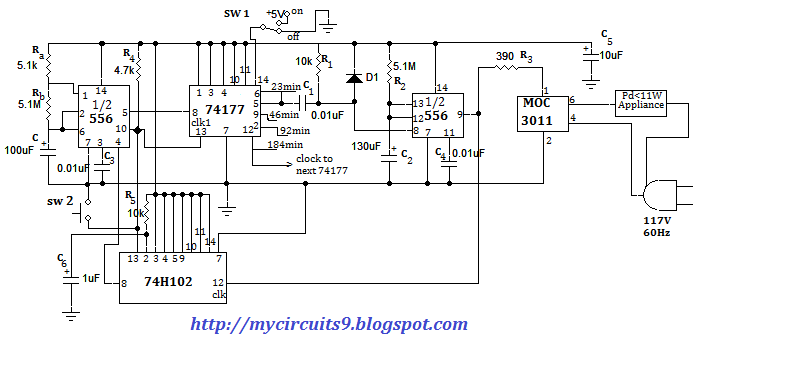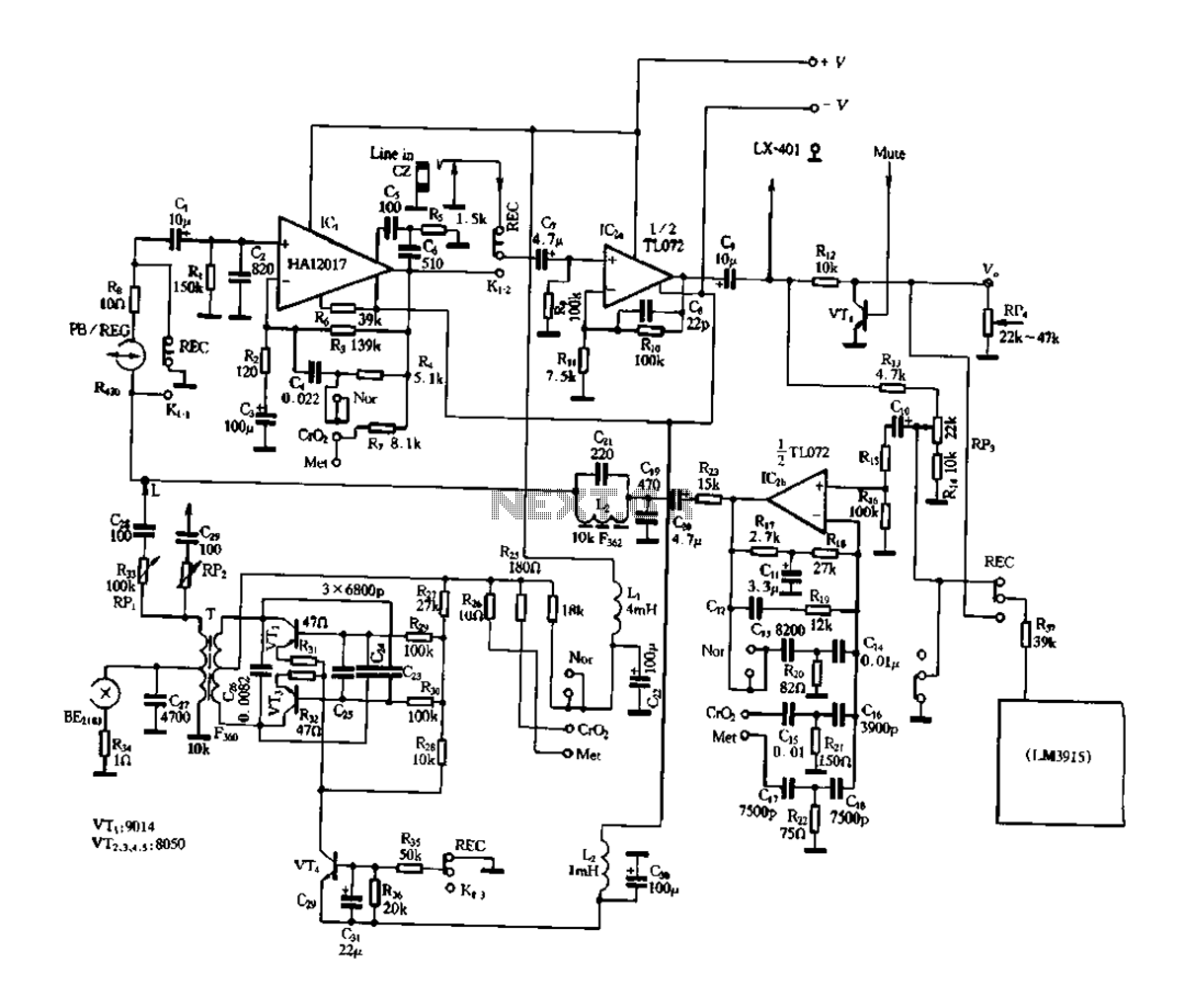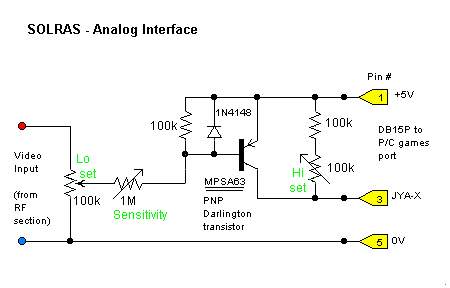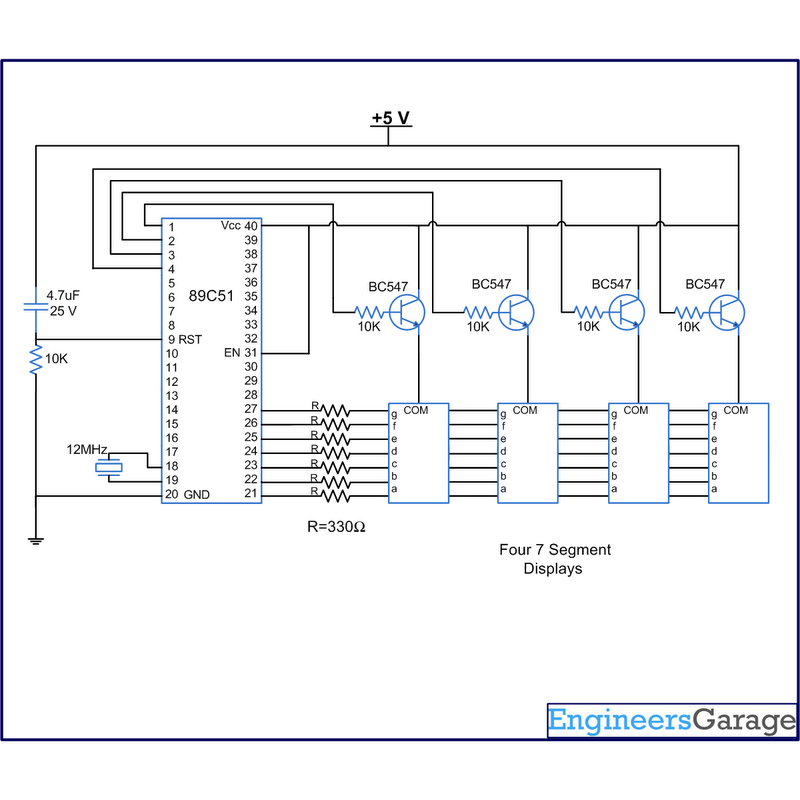
Solar Lamp Using PR4403 circuit
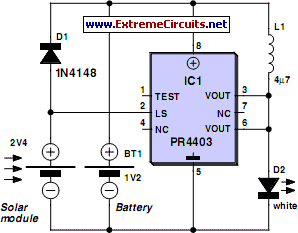
The PR4403 is an advanced version of the PR4402 40mA LED driver. It features an additional input known as LS, which can be activated by pulling it low to illuminate the LED. This functionality simplifies the construction of an automatic LED lamp powered by a rechargeable battery and a solar module. The LS input is directly connected to the solar cell, enabling the module to function as a light sensor while simultaneously charging the battery through a diode. As darkness approaches, the voltage across the solar module decreases; when it drops below a certain threshold, the PR4403 activates. During daylight hours, the battery is charged, and with the LED turned off, the driver consumes only 100µA.
The PR4403 LED driver is designed for applications that require efficient power management and automatic control of LED illumination. Its innovative LS input allows for seamless integration with solar-powered systems, making it ideal for outdoor lighting solutions. The ability to use the solar module both for charging the battery and as a light sensor underscores the device's versatility.
The circuit typically includes a solar panel connected to a rechargeable battery through a diode, which prevents backflow of current. The LS input is connected to the solar panel output, allowing the PR4403 to monitor the voltage level. When the ambient light decreases and the voltage falls below the designated threshold, the LS input signals the PR4403 to activate the LED driver, turning the LED on and providing illumination.
In daylight conditions, the solar panel generates sufficient voltage to charge the battery while keeping the LED off. The low quiescent current of 100µA ensures minimal energy consumption, maximizing the efficiency of the solar charging process. This feature is crucial for extending the operational lifespan of the battery and ensuring reliable performance in various lighting conditions.
Overall, the PR4403 LED driver is an effective solution for creating energy-efficient, automated lighting systems that leverage solar power, making it suitable for applications such as garden lights, pathway illumination, and other outdoor lighting projects. Its straightforward integration and low power consumption characteristics make it a valuable component in modern electronic designs focused on sustainability and efficiency.The PR4403 is an enhanced cousin of the PR4402 40mA LED driver. It has an extra input called LS which can be taken low to turn the LED on. This makes it very easy to build an automatic LED lamp using a rechargeable battery and a solar module. The LS input is connected directly to the solar cell, which allows the module to be used as a light sensor at the same time as it charges the battery via a diode.
When darkness falls so does the voltage across the solar module: when it is below a threshold value the PR4403 switches on. During the day the battery is charged and, with the LED of, the driver only draws 100µA.. 🔗 External reference
The PR4403 LED driver is designed for applications that require efficient power management and automatic control of LED illumination. Its innovative LS input allows for seamless integration with solar-powered systems, making it ideal for outdoor lighting solutions. The ability to use the solar module both for charging the battery and as a light sensor underscores the device's versatility.
The circuit typically includes a solar panel connected to a rechargeable battery through a diode, which prevents backflow of current. The LS input is connected to the solar panel output, allowing the PR4403 to monitor the voltage level. When the ambient light decreases and the voltage falls below the designated threshold, the LS input signals the PR4403 to activate the LED driver, turning the LED on and providing illumination.
In daylight conditions, the solar panel generates sufficient voltage to charge the battery while keeping the LED off. The low quiescent current of 100µA ensures minimal energy consumption, maximizing the efficiency of the solar charging process. This feature is crucial for extending the operational lifespan of the battery and ensuring reliable performance in various lighting conditions.
Overall, the PR4403 LED driver is an effective solution for creating energy-efficient, automated lighting systems that leverage solar power, making it suitable for applications such as garden lights, pathway illumination, and other outdoor lighting projects. Its straightforward integration and low power consumption characteristics make it a valuable component in modern electronic designs focused on sustainability and efficiency.The PR4403 is an enhanced cousin of the PR4402 40mA LED driver. It has an extra input called LS which can be taken low to turn the LED on. This makes it very easy to build an automatic LED lamp using a rechargeable battery and a solar module. The LS input is connected directly to the solar cell, which allows the module to be used as a light sensor at the same time as it charges the battery via a diode.
When darkness falls so does the voltage across the solar module: when it is below a threshold value the PR4403 switches on. During the day the battery is charged and, with the LED of, the driver only draws 100µA.. 🔗 External reference
